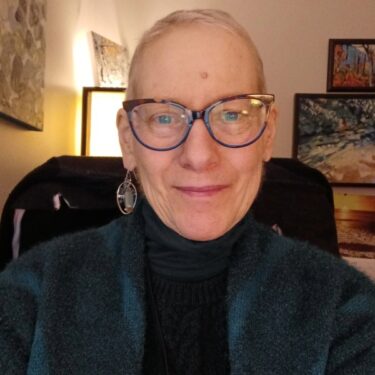Medication for opioid use disorder (MOUD) stands at the forefront of effective interventions for combating the opioid crisis. Despite the consensus on their importance, medications remain underused, presenting a significant gap in the standard services available to treat individuals with substance use disorder (SUD).
Buprenorphine, methadone and naltrexone constitute the trio of FDA-approved medications that have shown efficacy in treating opioid use disorder (OUD). These medications have been shown to play a pivotal role in reducing withdrawal symptoms, enhancing retention in treatment programs, decreasing emergency department visits and arrests and, ultimately, lowering the rates of overdose mortality.
Despite their proven benefits, the distribution of MOUD facilities often mirrors existing racial and socioeconomic divides: Methadone clinics are more commonly found in African American and Hispanic/Latino communities, while buprenorphine is more accessible in predominantly white areas. These disparities underscore the need for policy reform and increased provider education to ensure equitable access.
The removal of the X-waiver eliminating prior educational requirements to prescribe buprenorphine, marked a progressive step toward enhancing accessibility, yet the anticipated rise in prescribers was not realized. The challenges in implementing MOUD programs remains manifold. Confusion surrounding state treatment regulations and privacy laws continue to add complexity to care coordination. Rigid prior-authorization rules, restrictions on same-day billing, lack of insurance coverage, cost-sharing policies, low reimbursement rates, stigma and the intensive process of starting treatment further complicate access.
Many of these challenges underscore the urgent need for standardized processes across state lines that facilitate immediate, low-threshold access to medications. Opportunities to dismantle these barriers are within reach, but doing so will require a concerted effort from providers across the U.S.
To combat these challenges, several strategies have been identified.
Increase provider education
One of the primary barriers to MOUD prescribing is the lack of confidence and skill among health care providers. To address this, it is imperative to offer comprehensive education and training on OUD and other SUDs. SAMSHA-funded partners offer free eight-hour MOUD trainings for prescribers that comply with the MATE Act, the requirements set forth by the Drug Enforcement Agency (DEA) for initial registration or renewal registration.
Moreover, additional training on polysubstance use, comorbidity, trauma, health-related social needs and the known disparities in prescribing patterns for individuals with SUD (especially those belonging to marginalized populations) will help increase overall knowledge of addiction and dispel the stigma that prevents providers from becoming MOUD prescribers.
Integrate harm reduction
MOUD prescribers and prescribing organizations can enhance their practice by integrating harm reduction philosophies and services, including the voices of individuals with lived experience. This approach can aid providers in treating a complex condition through the promotion of patient autonomy and dignity.
Integrating harm reduction’s philosophical approach to meet people where they are, providers can establish treatment plans around positive toxicology screens to ensure that a patient’s ability to receive MOUD medication is not revoked during a recurrence or when patients have moderation-focused goals. Prescribers can provide patients with flexible appointments and same-day access, and integrate peers with lived experience to engage individuals in direct care. Many successful MOUD programs take the philosophical approach a step further, offering physical harm reduction services such as naloxone distribution, fentanyl and xylazine test strips, overdose safety planning, sterile syringes and other tools for safer use.
Strengthen partnerships
Collaboration is key to expanding MOUD access. While buprenorphine can be prescribed in an office-based setting by an in-house prescriber, behavioral health centers can also contract with outside prescribers or opioid treatment programs (OTPs) to increase their service capacity. For methadone, stiffer regulations make the following options popular: partnering with an OTP to establish a medication unit or obtaining a certification as an OTP through the Substance Abuse and Mental Health Services Administration (SAMHSA) and local Drug Enforcement Agency (DEA) office.
Additionally, the significant presence of comorbid conditions underscores the importance of forming alliances with mental and physical health providers to enhance the effectiveness of MOUD programs. Offering patients comprehensive access to an array of healthcare services, as well as connections to recovery community organizations and housing services, provides crucial support. This holistic approach helps patients to remain healthy and engaged in MOUD programs.
Deploy innovative models for prescribing
The Massachusetts nurse care manager model for office-based opioid treatment exemplifies how innovative approaches can streamline MOUD treatment, improve access to medications and alleviate some of the burden on physicians who prescribe medication. In this model, nurse care managers carry out the initial screening, link patients with waivered providers for eligibility confirmation and organize follow-up appointments to oversee medication adherence and recovery.
Get creative with funding
Creatively leveraging outside funds can be vital to the expansion of MOUD programs. State Opioid Response (SOR) grants have been used as an innovative source of supplemental funding to initiate and maintain MOUD programs, helping states and territories increase access to FDA-approved medications for the treatment of OUD. Additionally, opioid settlement funds are another recent source of supplemental funding being used to get MOUD programs up and running.
Provide implementation support
Technical assistance (TA) around implementation can help behavioral health care organizations navigate the complex landscape of MOUD prescribing. Mentoring programs can provide a much-needed layer of support. SAMSHA-funded partners offer free TA on various topics, including tailored implementation guidance, staff training, assessments to identify strengths and barriers to delivery, assistance in building connections to mental health and other physical health services and access to additional resources like screening tools, clinical guidelines and business models.
The path to effectively combating the opioid crisis lies in significantly increasing the rates of MOUD prescribing among health care providers. Despite the hurdles — ranging from limited provider training and pervasive stigma to financial constraints and restrictive regulations — progress is within reach. By prioritizing increased provider education, integrating harm reduction principles, strengthening partnerships, deploying innovative treatment models and leveraging available funding, we can close the gap in treatment access. This concerted effort will not only increase prescribing rates but will lead to more inclusive and effective care that ensures individuals across all communities have the support they need to recover and thrive.
Author
Senior Advisor, Substance Use Disorder in the Strategy and Growth Office
National Council for Mental Wellbeing
See bio




